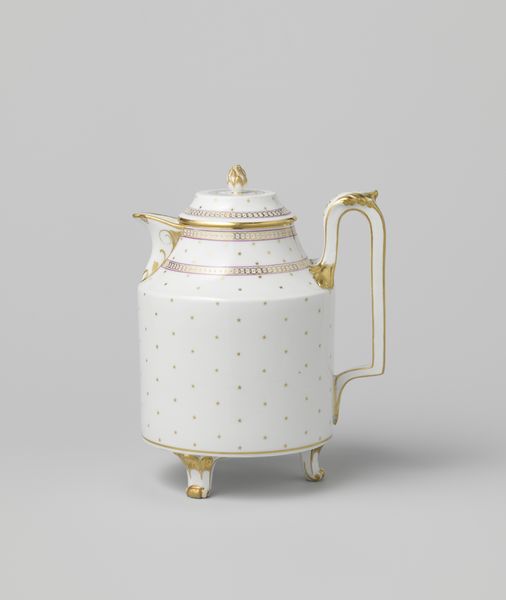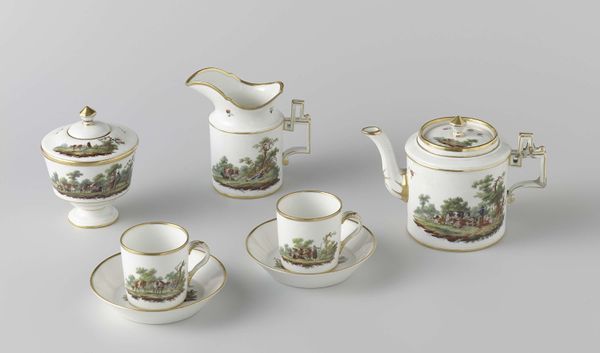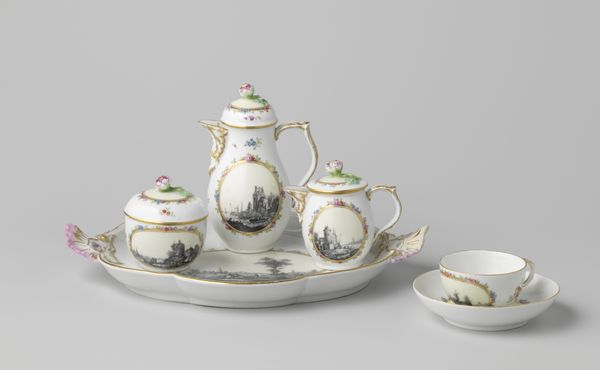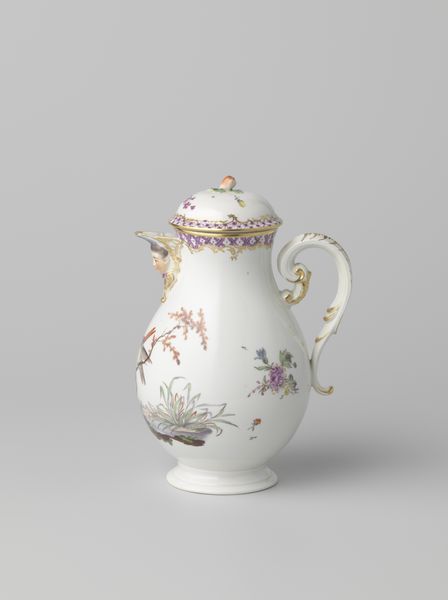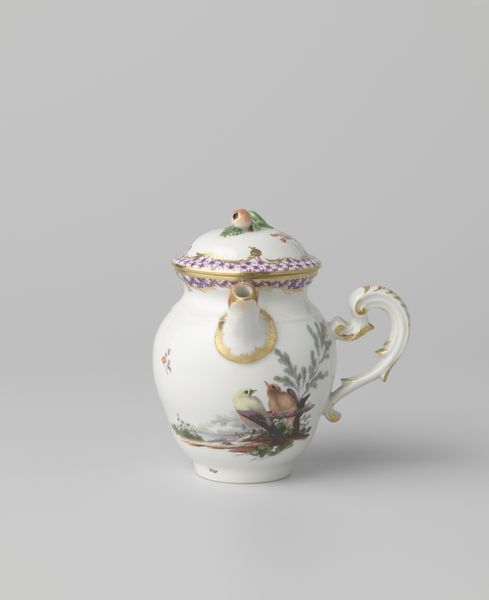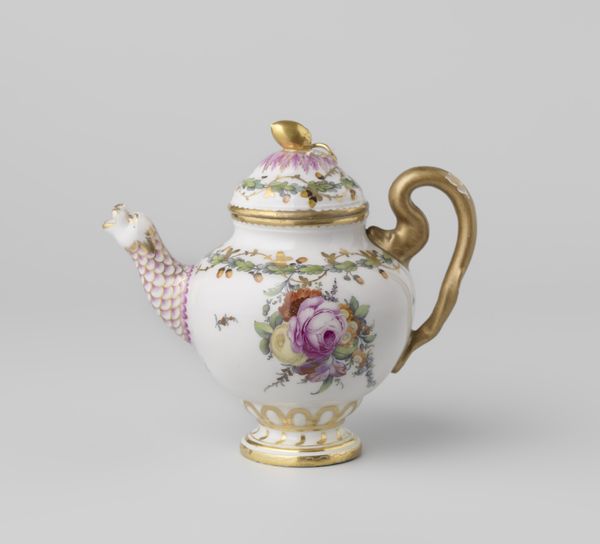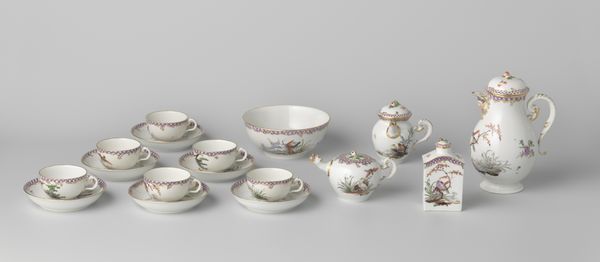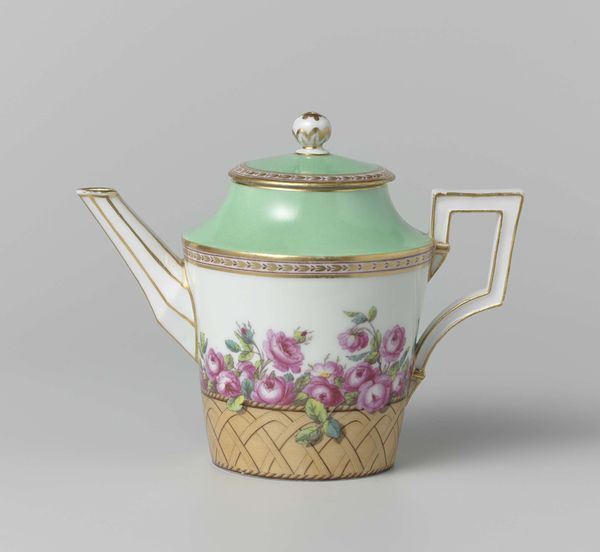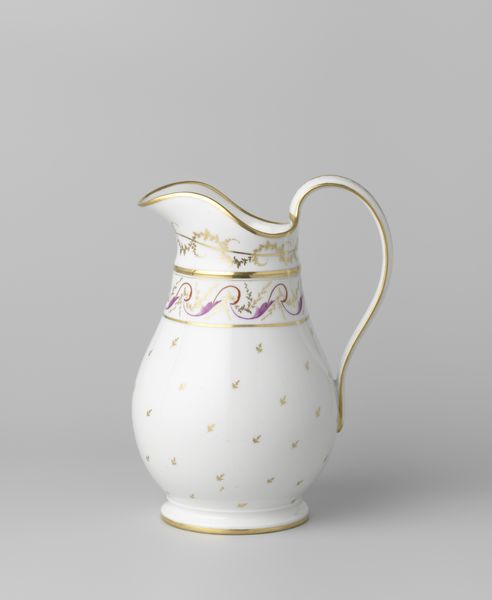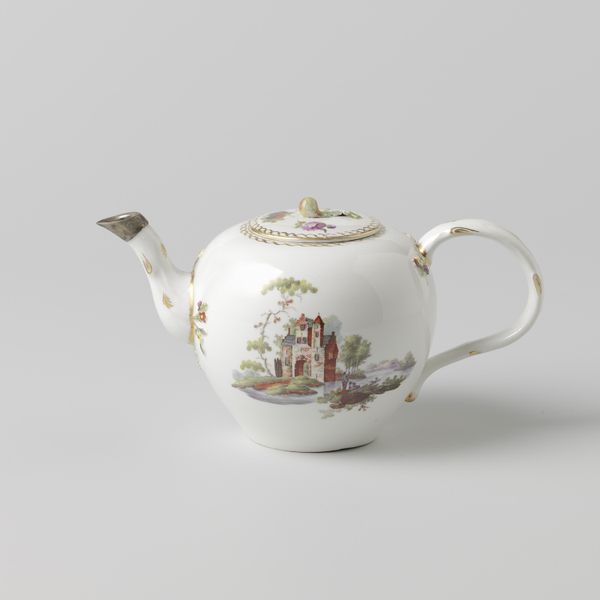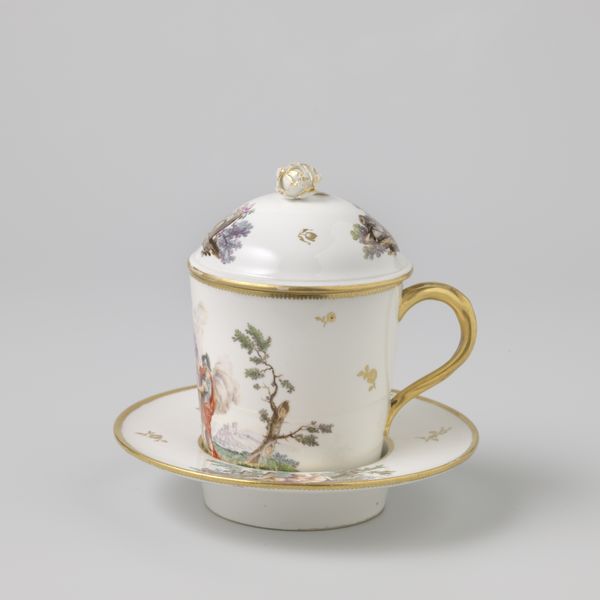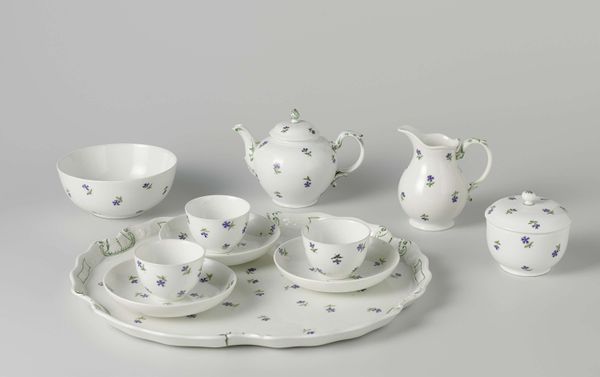
Coffee service with stars and ornamental borders c. 1791 - 1801
0:00
0:00
Copyright: Rijks Museum: Open Domain
Editor: Here we have a delightful porcelain coffee service created by Kaiserliche Porzellanmanufaktur around 1791 to 1801. The pieces are adorned with these lovely stars and ornamental borders. It feels quite delicate and refined. What strikes you when you look at this service? Curator: I'm immediately drawn to the means of production. Porcelain at this time represented technological innovation. The specific clays used, the high firing temperatures – these reflect not just skill, but access to resources and specific kinds of labor. These porcelain sets served as a visible symbol of luxury and taste, acquired through a complex network of mining, manufacturing, and trade. Editor: So, the material itself tells a story? Curator: Absolutely. Consider the rococo style as well, particularly the ornamental borders. These patterns are not just decorative, they’re the result of skilled labor. The process involves design, production, and a hierarchy of workers with specific expertise, impacting access to particular trades. How do you imagine this set functioning in the context of 18th-century society? Editor: I imagine it being displayed, more than actually used. I guess it’s meant to convey wealth? Curator: Exactly. Objects like this transcend pure utility; they represent status, taste, and the power of the individual who could commission or afford them. The question becomes, who produced it and for whom? The act of consuming coffee, made possible by global trade, itself became a performative act showcasing privilege. Editor: It’s interesting how a seemingly simple coffee set connects to such complex economic and social structures. It’s a bit to digest. Curator: It shows how much material culture is connected to production and labor relations. A useful perspective, wouldn't you agree? Editor: Indeed! Thanks, that was a great new approach to understanding art objects.
Comments
No comments
Be the first to comment and join the conversation on the ultimate creative platform.
